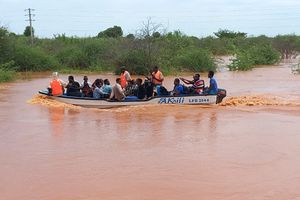Investing in children is smart economics

President Uhuru Kenyatta during a virtual launch of the Kenyan chapter of Generation Equality Forum at State House, Nairobi, in May.
Almost half of the population in Kenya are children. Their well-being and development depend on the services provided by national and county governments. It is critical that their issues are part of the development agenda and a top priority.
Through the Changing Childhood Project and other research, Unicef has identified and is focusing on six priority areas for children’s welfare and shaping Kenya’s next generation.
These are: the best start in life; enhancing education; primary and community health; expanding social protection; ending violence against children; and addressing climate change.
The next government can build on the gains in child development and improve lives if it takes up these six priority issues for children, with a special focus on regions that are left behind.
On education, Kenya stands out in sub-Saharan Africa in its overall performance in school participation and learning outcomes. However, inequities remain between geographical areas and among socioeconomic groups.
These arise from disparities in school participation, variations in student learning outcomes, and girls’ education.
For example, primary net enrolment rates vary widely, ranging from 42 per cent in some areas to 97 per cent in others. Secondary net enrolment rates in the wealthiest quintile, meanwhile, are almost double those in the bottom quintile.
These inequalities present the largest constraint on human capital formation – the process of increasing the number of skilled and experienced people . On the early years, around 26 per cent of under-fives are chronically malnourished. Malnutrition and high levels of stunting are strongly associated with lower human capital formation and lower quality of learning.
Unicef and World Bank calculations on the return-on-investment from tackling malnutrition show that this can be as high as 22 to one. Investing in these children means turning them from a potential burden on the health service, to 1.5 million individuals better prepared for education and employment opportunities, able to become a future powerhouse of economic growth.
This return-on-investment principle is true in many of the priority areas. Primary and community healthcare, for example, can meet up to 90 per cent of a child’s health needs with simple, low-cost interventions, preventing children from developing more advanced illnesses that are more expensive to treat. The return on investment here is almost 10 to one.
In 2015, Unicef and the World Bank conducted a study on the benefits of strengthening healthcare through community health workers (CHWs), considering the impact of 734,000 CHWs in eight countries across sub-Saharan Africa.
It found that achieving 90 per cent coverage of interventions delivered by CHWs would save over 300,000 child lives per year. With an estimated economic value of over $64,000 per life – in addition to the immense value of the lives – this results in about $19.4 billion in productivity gained per year.
Every child matters, has rights, and should actively participate in the development of the country.
By Maniza Zaman, Unicef Representative to Kenya, and Keith Hansen, World Bank Kenya Country Director






